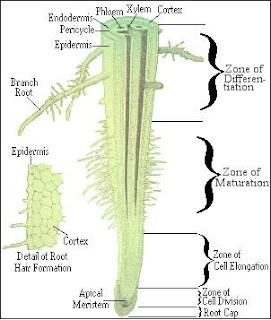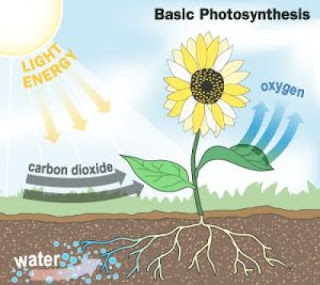KOMPAS.com — Jika selama ini kantung semar diidentikkan dengan si pemenang karena berhasil menjebak ribuan serangga, hasil penelitian ilmuwan asal Brunei Darussalam mengungkap hal berbeda. Kantung semar seolah menjadi pihak yang kalah sebab hanya menjadi toilet alias tempat kencing bagi kelelawar.
Hasil penelitian itu dipublikasikan di jurnal Royal Society Biology Letters bulan ini. Menurut para ilmuwan, relasi antara kantung semar dan kelelawar merupakan kasus kedua yang menggambarkan relasi tanaman karnivora dan mamalia. Sebelumnya, pada tahun 2009, dilaporkan hubungan antara tikus dan tanaman karnivora.
Ilmuwan yang meneliti kantung semar ini adalah Ulmar Grafe, seorang biolog dari Universitas Brunei Darussalam. Ia meneliti spesies kantung semar raffles atau Nepenthes rafflesiana varietas elongata. Sementara spesies kelelawar yang digunakan adalah hardwicke, ditangkap di sebuah hutan rawa gambut wilayah Brunei Darussalam.
Menurut Grafe, walaupun kantung semar tampak sebagai pihak yang kalah karena dikencingi, sebenarnya kantung semar adalah yang menang. Dengan urine dan feses kelelawar, kantung semar mendapatkan nutrisi tambahan berupa nitrogen. Analisis kimia pada kantung semar raffles menunjukkan, sebanyak 33,8 persen nutrisinya berasal dari kotoran kelelawar.
Malah, peneliti menemukan, kantung semar beradaptasi menjadi toilet terbaik bagi si kelelawar. Kantung semar memiliki kantung yang tumbuh memanjang, silindris, dan berdiameter kecil. Lubang pada kantung juga sangat mendukung bagi kelelawar untuk membuang kotorannya.
Kantung semar raffles justru kurang beradaptasi untuk menjebak serangga. Jenis ini mengeluarkan senyawa volatil (mudah menguap) yang lebih sedikit daripada jenis lain. Akibatnya, tak begitu banyak serangga yang terjebak dalam kantungnya. Jenis ini juga memproduksi senyawa pencerna serangga yang juga lebih sedikit.
Peneliti melaporkan, meski kelelawar juga memakan serangga, kompetisi antara kelelawar dan katung semar tak ditemukan. Kelelawar juga tak pernah memakan serangga yang terjebak dalam kantung semar. Relasi antara keduanya murni mutualisme, kelawar mendapat tempat untuk membuang kotoran dan kantung semar mendapar nutrisi dari kotoran.
Grafe mengungkapkan, relasi tersebut terbentuk lewat proses evolusi setelah kelelawar bertengger di kantung semar. "Penggunaan secara insidental mungkin berevolusi menjadi reguler dan eksklusif ketika tanaman merespons dengan beradaptasi. Kantung semar menjadi tempat yang lebih atraktif untuk bertengger," papar Grafe.
Bats and Pouch Unique Relationship Semar
KOMPAS.com - If during the sac semar identified with the winner due to successful trapping thousands of insects, research scientists from Brunei Darussalam reveal different things. Semar bag seems to be the losers because only a toilet urinal alias for bats.
The results were published in the Royal Society journal Biology Letters this month. According to scientists, the relations between semar and bat bag is a second case which defines the relationship carnivorous plants and mammals. Previously, in 2009, reported the relationship between rats and carnivorous plants.
Scientists who examined the bag semar is Ulmar Grafe, a biologist from the University of Brunei Darussalam. He researched species of Nepenthes bag semar Raffles or rafflesiana variety elongata. While species of bats used were Hardwicke, was arrested in an area of peat swamp forests of Brunei Darussalam.
According to Grafe, although pockets semar appear as losers because urinated, semar bag is actually a win. With urine and feces of bats, bags semar obtain additional nutrients in the form of nitrogen. Chemical analysis showed the sac semar Raffles, as much as 33.8 percent nutrients derived from bat droppings.
In fact, researchers found, the bag becomes a toilet semar adapt best to the bat. Semar bag has a pouch that grows elongated, cylindrical, and small diameter. The hole in the bag is also very supportive for the bat to remove droppings.
Raffles semar bag instead of less adapted to trap insects. This type of release of volatile compounds (easily evaporate) less than other types. As a result, not so many insects that are trapped in pockets. This species also produces compounds that are also digesting insects less.
Researchers reported, although bats also eat insects, competition between bat and katung semar not found. Bats also eat insects which never stuck in a bag semar. The relation between the two pure mutualism, kelawar have a place to dispose of dirt and bags of dirt semar mendapar nutrition.
Researchers reported, although bats also eat insects, competition between bat and katung semar not found. Bats also eat insects which never stuck in a bag semar. The relation between the two pure mutualism, kelawar have a place to dispose of dirt and bags of dirt semar mendapar nutrition.
Grafe revealed, relationships are formed through the process of evolution after a bat perched on the bag semar. "The use of incidental may evolve into a regular and exclusive when plants respond by adapting. Pouch semar become a more attractive place to roost," said Grafe.




nice work!!
ReplyDeletehttp://vini-amdifferent.blogspot.com/
vini